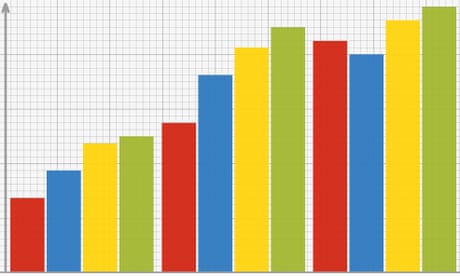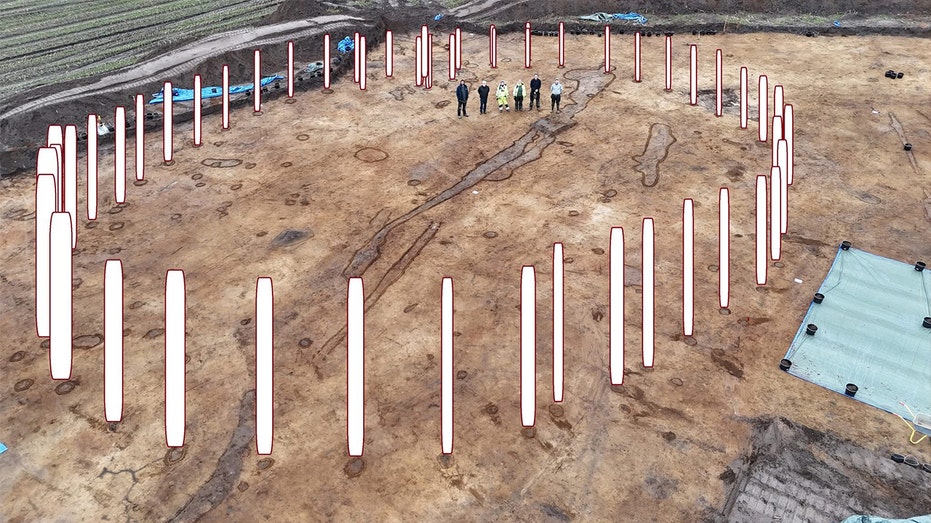- by foxnews
- 10 Mar 2025
‘Wallets and eyeballs’: how eBay turned the internet into a marketplace
‘Wallets and eyeballs’: how eBay turned the internet into a marketplace
- by theguardian
- 18 Jun 2022
- in technology

One weekend in September 1995, a software engineer made a website. It wasn't his first. At 28, Pierre Omidyar had followed the standard accelerated trajectory of Silicon Valley: he had learned to code in seventh grade, and was on track to becoming a millionaire before the age of 30, after having his startup bought by Microsoft. Now he worked for a company that made software for handheld computers, which were widely expected to be the next big thing. But in his spare time, he liked to tinker with side projects on the internet. The idea for this particular project would be simple: a website where people could buy and sell.
Buying and selling was still a relatively new idea online. In May 1995, Bill Gates had circulated a memo at Microsoft announcing that the internet was the company's top priority. In July, a former investment banker named Jeff Bezos launched an online storefront called Amazon.com, which claimed to be "Earth's biggest bookstore". The following month, Netscape, creator of the most popular web browser, held its initial public offering (IPO). By the end of the first day of trading, the company was worth almost $3bn - despite being unprofitable. Wall Street was paying attention. The dot-com bubble was starting to inflate.
If the internet of 1995 inspired dreams of a lucrative future, the reality ran far behind. The internet may have been attracting millions of newcomers - there were nearly 45 million users in 1995, up 76% from the year before - but it wasn't particularly user-friendly. Finding content was tricky: you could wander from one site to another by following the tissue of hyperlinks that connected them, or page through the handmade directory produced by Yahoo!, the preferred web portal before the rise of the modern search engine. And there wasn't much content to find: only 23,500 websites existed in 1995, compared to more than 17m five years later. Most of the sites that did exist were hideous and barely usable.
But the smallness and slowness of the early web also lent it a certain charm. People were excited to be there, despite there being relatively little for them to do. They made homepages simply to say hello, to post pictures of their pets, to share their enthusiasm for Star Trek. They wanted to connect.
Omidyar was fond of this form of online life. He had been a devoted user of the internet since his undergraduate days, and a participant in its various communities. He now observed the rising flood of dot-com money with some concern. The corporations clambering on to the internet saw people as nothing more than "wallets and eyeballs", he later told a journalist. Their efforts at commercialisation weren't just crude and uncool, they also promoted a zombie-like passivity - look here, click here, enter your credit card number here - that threatened the participatory nature of the internet he knew.
"I wanted to do something different," Omidyar later recalled, "to give the individual the power to be a producer as well as a consumer." This was the motivation for the website he built in September 1995. He called it AuctionWeb. Anyone could put up something for sale, anyone could place a bid, and the item went to the highest bidder. It would be a perfect market, just like you might find in an economics textbook. Through the miracle of competition, supply and demand would meet to discover the true price of a commodity. One precondition of perfect markets is that everyone has access to the same information, and this is exactly what AuctionWeb promised. Everything was there for all to see.
The site grew quickly. By its second week, the items listed for sale included a Yamaha motorcycle, a Superman lunchbox and an autographed Michael Jackson poster. By February 1996, traffic had grown brisk enough that Omidyar's web hosting company increased his monthly fee, which led him to start taking a cut of the transactions to cover his expenses. Almost immediately, he was turning a profit. The side project had become a business.
But the perfect market turned out to be less than perfect. Disputes broke out between buyers and sellers, and Omidyar was frequently called upon to adjudicate. He didn't want to have to play referee, so he came up with a way to help users work it out themselves: a forum. People would leave feedback on one another, creating a kind of scoring system. "Give praise where it is due," he said in a letter posted to the site, "make complaints where appropriate." The dishonest would be driven out, and the honest would be rewarded - but only if users did their part. "This grand hope depends on your active participation," he wrote.
The value of AuctionWeb would rely on the contributions of its users. The more they contributed, the more useful the site would be. The market would be a community, a place made by its members. They would become both consumers and producers, as Omidyar hoped, and among the things they produced would be the content that filled the site.
By the summer of 1996, AuctionWeb was generating $10,000 a month. Omidyar decided to quit his day job and devote himself to it full-time. He had started out as a critic of the e-commerce craze and had ended up with a successful e-commerce company. In 1997, he renamed it eBay.
Ebay was one of the first big internet companies. It became profitable early, grew into a giant of the dot-com era, survived the implosion of the dot-com bubble, and still ranks among the largest e-commerce firms in the world. But what makes eBay particularly interesting is how, in its earliest incarnation, it anticipated many of the key features that would later define the phenomenon commonly known as the "platform". Ebay wasn't just a place where collectors waged late-night bidding wars over rare Beanie Babies. In retrospect, it also turned out to be a critical hinge in the history of the internet. Omidyar's site pioneered the basic elements that would later enable Google, Facebook and the other tech giants to unlock the profit potential of the internet by "platformising" it.
None of the metaphors we use to think about the internet are perfect, but "platform" is among the worst. The term originally had a specific technical meaning: it meant something that developers build applications on top of, such as an operating system. But the word has since come to refer to various kinds of software that run online, particularly those deployed by the largest tech firms. The scholar Tarleton Gillespie has argued that this shift in the use of the word "platform" is strategic. By calling their services "platforms", companies such as Google can project an aura of openness and neutrality. They can present themselves as playing a supporting role, merely facilitating the interactions of others. Their control over the spaces of our digital life, and their active role in ordering such spaces, is obscured. "Platform" isn't just imprecise. It's designed to mystify rather than clarify.
A more useful metaphor for understanding the internet, one that has guided its architects from the beginning, is the stack. A stack is a set of layers piled on top of one another. Think of a house: you have the basement, the first floor, the second floor and so on, all the way up to the roof. The things that you do further up in a house often depend on systems located further down. If you take a shower, a water heater in the basement warms up the cold water being piped into your house and then pipes it up to your bathroom.
The internet also has a basement, and its basement also consists largely of pipes. These pipes carry data, and everything you do further up the stack depends on these pipes working properly. Towards the top of the stack is where the sites and apps live. This is where we experience the internet, through the pixels of our screens, in emails or tweets or streams. The best way to understand what happens on these sites and apps - on what tech companies call "platforms" - is to understand them as part of the broader story of the internet's privatisation.
The internet started out in the 1970s as an experimental technology created by US military researchers. In the 80s, it grew into a government-owned computer network used primarily by academics. Then, in the 90s, privatisation began. The privatisation of the internet was a process, not an event. It did not involve a simple transfer of ownership from the public sector to the private, but rather a more complex movement whereby corporations programmed the profit motive into every level of the network. A system built by scientists for research was renovated for the purpose of profit maximisation. This took hardware, software, legislation, entrepreneurship. It took decades. And it touched all of the internet's many pieces.
The process of privatisation started with the pipes, and then worked its way up the stack. In April 1995, only five months before Omidyar made the website that would become eBay, the government allowed the private sector to take over control of the network's plumbing. Households and businesses were eager to get online, and telecoms companies made money by helping them access the internet.
But getting people online was a small fraction of the system's total profit potential. What really got investors' capital flowing was the possibility of making money from what people did online. In other words, the next step was figuring out how to maximise profit in the upper floors, where people actually use the internet. The real money lay not in monetising access, but in monetising activity. This is what Omidyar did so effectively when he created a place where people wanted to buy and sell goods online, and took a cut of their transactions.
The dot-com boom began with Netscape's explosive IPO in August 1995. Over the following years, tens of thousands of startups were founded and hundreds of billions of dollars were invested in them. Venture capital entered a manic state: the total amount of US venture-capital investment increased more than 1,200% from 1995 to 2000. Hundreds of dot-com companies went public and promptly soared in value: at their peak, technology stocks were worth more than $5tn. When eBay went public in 1998, it was valued at more than $2bn on the first day of trading; the continued ascent of its stock price over the next year made Omidyar a billionaire.
Yet most of the startups that attracted huge investment during these years didn't actually make money. For all the hype, profits largely failed to materialise, and in 2000 the bubble burst. From March to September, the 280 stocks in the Bloomberg US Internet Index lost almost $1.7tn. "It's rare to see an industry evaporate as quickly and completely," a CNN journalist remarked. The following year brought more bad news. The dot-com era was dead.
Today, the era is typically remembered as an episode of collective insanity - as an exercise in what Alan Greenspan, during his contemporaneous tenure as chair of the Federal Reserve, famously called "irrational exuberance". Pets.com, a startup that sold pet supplies online, became the best-known symbol of the period's stupidity, and a touchstone for retrospectives ever since. Never profitable, the company spent heavily on advertising, including a Super Bowl spot; it raised $82.5m in its IPO in February 2000 and imploded nine months later.
Arrogance, greed, magical thinking and bad business decisions all contributed to the failure of the dot-com experiment. Yet none of these were decisive. The real problem was structural. While their investors and executives probably wouldn't have understood it in these terms, dot-com companies were trying to advance the next stage of the internet's privatisation - namely, by pushing the privatisation of the internet up the stack. But the computational systems that could make such a push feasible were not yet in place. Companies still struggled to turn a profit from user activity.
In his analysis of capitalist development, Karl Marx drew a distinction between the "formal" and "real" subsumption of labour by capital. In formal subsumption, an existing labour process remains intact, but is now performed on a capitalist basis. A peasant who used to grow his own food becomes a wage labourer on somebody else's farm. The way he works the land stays the same. In real subsumption, by contrast, the labour process is revolutionised to meet the requirements of capital. Formerly, capital inherited a process; now, it remakes the process. Our agricultural worker becomes integrated into the industrialised apparatus of the modern factory farm. The way he works completely changes: his daily rhythms bear little resemblance to those of his peasant predecessors. And the new arrangement is more profitable for the farm's owner, having been explicitly organised with that end in mind.
This is a useful lens for thinking about the evolution of the internet, and for understanding why the dot-coms didn't succeed. The internet of the mid-to-late 1990s was under private ownership, but it had not yet been optimised for profit. It retained too much of its old shape as a system designed for researchers, and this shape wasn't conducive to the new demands being placed on it. Formal subsumption had been achieved, in other words, but real subsumption remained elusive.
Accomplishing the latter would involve technical, social and economic developments that made it possible to construct new kinds of systems. These systems are the digital equivalents of the modern factory farm. They represent the long-sought solution to the problem that consumed and ultimately defeated the dot-com entrepreneurs: how to push privatisation up the stack. And eBay offered the first glimpse of what that solution looked like.
Ebay enlisted its users in its own creation. They were the ones posting items for sale and placing bids and writing feedback on one another in the forum. Without their contributions, the site would cease to exist.
Omidyar was tapping into a tradition by setting up eBay in this way. In 1971, a programmer named Ray Tomlinson invented email. This was before the internet existed: Tomlinson was using its precursor, Arpanet, a cutting-edge network that the Pentagon created to link computers across the country. Email became wildly popular on Arpanet: just two years after its invention, a study found that it made up three-quarters of all network traffic. As the internet grew through the 1980s, email found an even wider reach. The ability to exchange messages instantaneously with someone far away was immensely appealing; it made new kinds of collaboration and conversation possible, particularly through the mailing lists that formed the first online communities.
Email was more than just a useful tool. It helped humanise the internet, making a cold assemblage of cables and computers feel inhabited. The internet was somewhere you could catch up with friends and get into acrimonious arguments with strangers. It was somewhere to talk about politics or science fiction or the best way to implement a protocol. Other people were the main attraction. Even the world wide web was made with community in mind. "I designed it for a social effect - to help people work together," its creator, Tim Berners-Lee, would later write.
Community is what Omidyar liked best about the internet, and what he feared the dot-com gold rush would kill. He wasn't alone in this: one could find dissidents railing against the forces of commercialisation on radical mailing lists. But Omidyar was no anti-capitalist. He was a libertarian: he believed in the liberating power of the market. He didn't oppose commercialisation as such, just the particular form it was taking. The companies opening cheesy digital storefronts and plastering the web with banner ads were doing commercialisation poorly. They were treating their users as customers. They didn't understand that the internet was a social medium.
Ebay, by contrast, would be firmly rooted in this fact. From its first days as AuctionWeb, the site described itself as a community, and this self-definition became integral to its identity and to its operation. For Omidyar, the point wasn't to defend the community from the market but rather to recast the community as a market - to fuse the two.
No less a figure than Bill Gates saw the future of the internet in precisely these terms. In 1995, the same year that Omidyar launched AuctionWeb, Gates co-authored a book called The Road Ahead. In it, the Microsoft CEO laid out his vision for the internet as "the ultimate market": "It will be where we social animals will sell, trade, invest, haggle, pick stuff up, argue, meet new people, and hang out. Think of the hustle and bustle of the New York Stock Exchange or a farmers' market or of a bookstore full of people looking for fascinating stories and information. All manner of human activity takes place, from billion-dollar deals to flirtations."
Here, social relationships have merged so completely with market relationships as to become indistinguishable. The internet is the instrument of this union; it brings people together, but under the sign of capital. Gates believed his dream was at least a decade from being realised. Yet by the time his book came out, AuctionWeb was already making progress toward achieving it.
Combining the community with the market was a lucrative innovation. The interactions that occurred in the guise of the former greatly enhanced the financial value of the latter. Under the banner of community, AuctionWeb's buyers and sellers were encouraged to perform unpaid activities that made the site more useful, such as rating one another in the feedback forum or sharing advice on shipping. And the more people participated, the more attractive a destination it became. More people using AuctionWeb meant more items listed for sale, more buyers bidding in auctions, more feedback posted to the forum - in short, a more valuable site. This phenomenon - the more users something has, the more valuable it becomes - is what economists call network effects. On the web, accommodating growth was fairly easy: increasing one's hosting capacity was a simpler and cheaper proposition than the brick-and-mortar equivalent. And doing so was well worth it because, at a certain size, network effects locked in advantages that were hard for a competitor to overcome.
A second, related strength was the site's role as a middleman. In an era when many dot-coms were selling goods directly - Pets.com paid a fortune on postage to ship pet food to people's doors - Omidyar's company connected buyers and sellers instead, and pushed the cost of postage on to them. This enabled it to profit from users' transactions while remaining extremely lean. It had no inventory, no warehouses - just a website.
But AuctionWeb was not only a middleman. It was also a legislator and an architect, writing the rules for how people could interact and designing the spaces where they did so. This wasn't in Omidyar's plan. He initially wanted a market run by its members, an ideal formed by his libertarian beliefs. His creation of the feedback forum likely reflected an ideological investment in the idea that markets were essentially self-organising, as much as his personal interest in no longer having to mediate various disputes.
Contrary to libertarian assumptions, however, the market couldn't function without the site's ability to exercise a certain kind of sovereignty. The feedback forum is a good example: users started manipulating it, leaving praise for their friends and sending mobs of malicious reviewers after their enemies. The company would be compelled to intervene again and again. It did so not only to manage the market but also to expand it by attracting more buyers and sellers through new categories of goods and by expanding into new countries - an imperative that shareholders imposed after eBay went public in 1998. "Despite its initial reluctance, the company stepped increasingly into a governance role," writes the sociologist Keyvan Kashkooli, in his study of eBay's evolution. Increasing profitability required managing people's behaviour, whether through the code that steered them through the site or the user agreements that governed their activities on it.
Thanks to network effects, and its status as both middleman and sovereign, eBay easily turned a profit. When the crash of 2000-01 hit, it survived with few bruises. And in the aftermath of the crash, as an embattled industry, under pressure from investors, tried to reinvent itself, the ideas that it came up with had much in common with those that had formed the basis for eBay's early success.
For the most part, eBay's influence was neither conscious nor direct. But the affinities were unmistakable. Omidyar's community market of the mid-1990s was a window into the future. By later standards it was fairly primitive, existing as it did within the confines of an internet not yet remodelled for the purpose of profit maximisation. But the systems that would accomplish that remodelling, that more total privatisation of the internet, would do so by elaborating the basic patterns that Omidyar had applied. These systems would be called platforms, but what they resembled most were shopping malls.
The first modern shopping mall was built in Edina, Minnesota, in 1956. Its architect, Victor Gruen, was a Jewish socialist from Vienna who had fled the Nazis and disliked American car culture. He wanted to lure midcentury suburbanites out of their Fords and into a place that recalled the "rich public social life" of a great European city. He hoped to offer them not only shops but libraries and cinemas and community centres. Above all, his mall would be a space for interaction: an "outlet for that primary human instinct to mingle with other humans". Unlike in a city, however, this mingling would take place within a controlled setting. The chaos of urban life would be displaced by the discipline of rational design.
As Gruen's invention caught on, the grander parts of his vision fell away. But the idea of an engineered environment that paired commerce with a public square remained. Gruen's legacy would be a kind of capitalist terrarium, nicely captured by what urban planners call a "privately owned public space".
The systems that dominate life at the upper end of the stack are best understood, to borrow an insight from the scholar Jathan Sadowski, as shopping malls. The shopping malls of the internet - Google, Facebook, Amazon - are nothing if not privately owned public spaces. Calling themselves platforms, they are in fact corporate enclosures, with a wide range of interactions transpiring inside of them. Just like in a real mall, some of these interactions are commercial, such as buying clothes from a merchant, while others are social, such as hanging out with friends. But what distinguishes the online mall from the real mall is that within the former, everything one does makes data. Your clicks, chats, posts, searches - every move, however small, leaves a digital trace. And these traces present an opportunity to create a completely new set of arrangements.
Real malls are in the rental business: the owner charges tenants rent, essentially taking a slice of their revenues. Online malls can make money more or less the same way, as eBay demonstrated early on, by taking a cut of the transactions they facilitate. But, as Sadowski points out, online malls are also able to capture another kind of rent: data rent. They can collect and make money from those digital traces generated by the activities that occur within them. And since they control every square inch of the enclosure, and because modifying the enclosure is simply a matter of deploying new code, they can introduce architectural changes in order to cause those activities to generate more traces, or traces of different kinds.
These traces turn out to be very valuable. So valuable, in fact, that amassing and analysing them have become the primary functions of the online mall. Like Omidyar's community market, the online mall facilitates interactions, writes the rules for those interactions, and benefits from having more people interacting with one another. But in the online mall, these interactions are recorded, interpreted and converted into money in a range of ways. Data can help sell targeted advertising. It can help build algorithmic management systems that siphon more profit out of each worker. It can help train machine learning models in order to develop and refine automated services like chatbots, which can in turn reduce labour costs and open new revenue streams. Data can also sustain faith among investors that a tech company is worth a ton of money, simply because it has a ton of data.
This is what distinguishes online malls from their precursors: they are above all designed for making, and making use of, data. Data is their organising principle and essential ingredient.
Data is sometimes compared to oil, but a better analogy might be coal. Coal was the fuel that powered the steam engine. It propelled the capitalist reorganisation of manufacturing from an artisanal to an industrial basis, from the workshop to the factory, in the 19th century. Data has played a comparable role. It has propelled the capitalist reorganisation of the internet, banishing the remnants of the research network and perfecting the profit engine.
Very little of this vastly complex machinery could be foreseen from the vantage point of 1995. But the arrival of AuctionWeb represented a large step toward making it possible. The story of the modern internet is often told through the stories of Google, Facebook, Amazon and the other giants that have come to conquer our online life. But their conquests were preceded and prefigured by another, one that started as a side project and stumbled into success by coming up with the basic blueprint for making a lot of money on the internet.
Adapted from Internet for the People: The Fight for Our Digital Future by Ben Tarnoff, published by Verso and avilable at guardianbookshop.com
- by foxnews
- descember 09, 2016
Ancient structure used for cult 'rituals' discovered by archaeologists
A Neolithic Timber Circle was discovered by archeologists in Denmark resembling the historical landmark Stonehenge in the U.K. It is open to be viewed by the public.
read more





